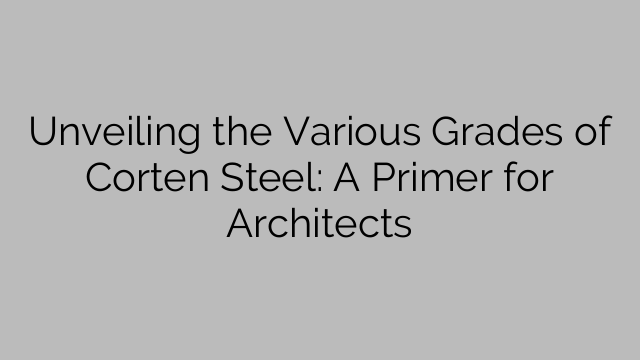Corten steel was first developed in the 1930s by the United States Steel Corporation, primarily for use in railroad coal wagons. It was found that the addition of certain alloys, such as copper, nickel, and chromium, provided the steel with enhanced corrosion resistance. This unique property is what sets Corten steel apart from regular carbon steel, as it forms a protective patina on its surface when exposed to the elements.
The most common grade of Corten steel used in architecture is ASTM A588, which has a high resistance to atmospheric corrosion due to its alloy composition. ASTM A588 contains copper, chromium, and nickel, which all contribute to its corrosion resistance. This grade of Corten steel is often used in outdoor sculptures, exterior facades, and architectural details, as it ages beautifully and develops a warm, rusty patina over time.
Another popular grade of Corten steel is ASTM A606, also known as Corten Steel Sheet. ASTM A606 is commonly used for structural applications, such as bridges, buildings, and towers. It offers high tensile strength and is particularly resistant to atmospheric corrosion, making it suitable for a range of architectural projects.
For those seeking a more experimental approach, there are also grades of Corten steel that offer different surface finishes. One such grade is ASTM A242, which has a smooth, mill finish and is often used in cladding systems and roofing applications. This grade of Corten steel provides a modern, sleek appearance that can be contrasted with other materials to create a striking architectural statement.
While Corten steel offers many advantages for architects, it is important to consider the limitations of each grade. For instance, ASTM A588 may not be suitable for applications subject to chloride exposure, such as coastal environments, as the chloride ions can accelerate corrosion. Similarly, while ASTM A606 is highly corrosion-resistant, it may require additional treatments, such as painting or coating, to ensure long-term durability.
In conclusion, unveiling the various grades of Corten steel is essential for architects to make informed decisions about their design choices. The unique properties and aesthetics of Corten steel have made it a popular material in architecture, but it is essential to understand the different grades and their limitations. Whether it is the rustic, weathered appearance of ASTM A588 or the sleek, modern finish of ASTM A242, choosing the appropriate grade of Corten steel can enhance the visual appeal and longevity of architectural projects. By understanding the different grades, architects can utilize Corten steel to its fullest potential and create stunning designs that stand the test of time.
[ad_2]

